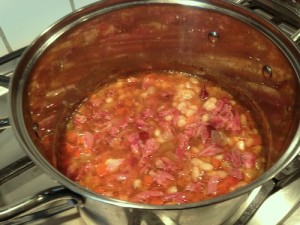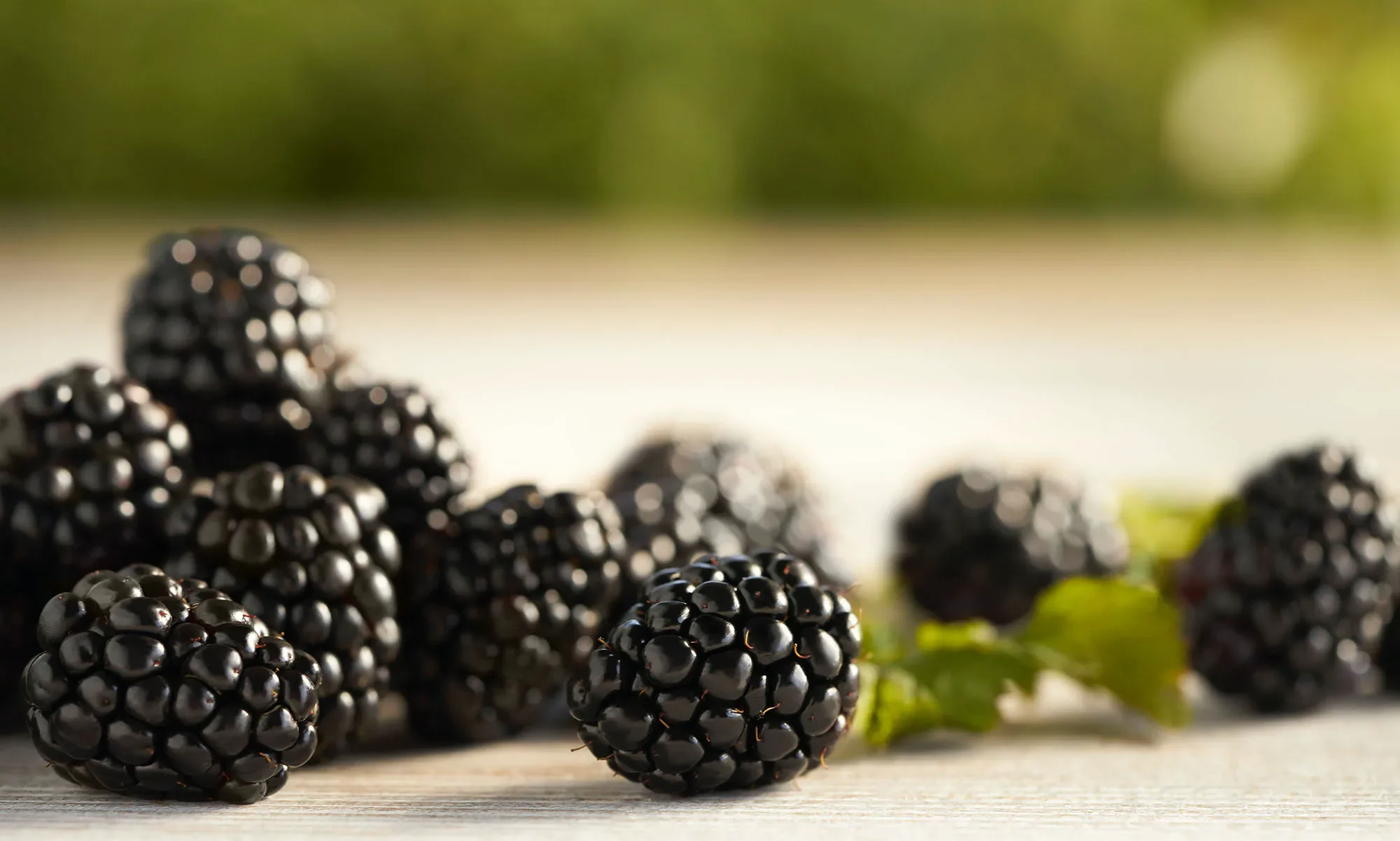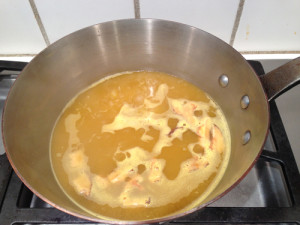Cassoulet takes its name from the earthenware casserole in which it was traditionally made. It was once a one-pot peasant meal made up of slow-simmered savory beans cooked with an assortment of whatever meats were on hand and topped with duck fat-infused bread crumbs. There are as many variations as there are cooks, and they are all the very definition of a rich, savory, winter meal.
My sweetie roasted two ducks on Thanksgiving because he knew I wanted to make cassoulet the following weekend. I had eaten it many times, but had never made it, and was eager to create a personal version. Since I had roasted duck legs on hand, and not duck confit, I sautéed the duck meat in duck fat at the end, to compensate. These types of recipes lend themselves to improvisation, and peasant fare is about using up leftovers, so everything turned out perfectly delicious.
But back to the cassoulet. Each step is easy, but the entire project is a bit time consuming, so I decided to stretch everything out over several days. Each day’s steps flowed into and supported the next day’s, so it turned into easy fun. What better way to use a four-day Thanksgiving holiday?
Cassoulet
Yield: 6-8 servings
2 pound duck confit (or 1 Muscovy duck, roasted (strain and save fat from pan; reserve giblets)
Note: This recipe, in its entirety, needs about a cup of duck fat and 10 cups of duck stock. If you’re buying these things or improvising, plan accordingly.
STOCK (yield: 10 cups)
2 tins (1.5 oz. each) More Than Gourmet duck demi glace (or 1 duck carcass from the roasted duck)
1 carrot
1 stalk celery
1 large tomato, chopped, about 1 cup (or 1 can chopped tomatoes)
1 onion, roughly chopped
1/2 cup dried shiitake and/or porcini mushrooms
2 garlic cloves, smashed
2 branches of thyme and parsley and 2 bay leaves
10 whole peppercorns
Water to cover (12 cups or so)
BEANS & HAM HOCKS
1 lb. dried white beans (Haricot Tarbais, Great Northern, or cannellini)
2 tablespoons duck fat
8 cloves garlic, smashed
1 onion, diced
1 carrot, diced
8 cups duck stock (above)
2 large unsmoked ham hocks
PORK STEW
1 lb. pork shoulder, cut into 1/2” cubes (I use boneless top pork loin chops)
1/2 cup duck fat
1/2 lb. pancetta, cubed (or uncured, unsmoked bacon)
8 cloves garlic, smashed
1 onion, diced
1 carrot, diced
Bouquet Garni: 4 sprigs marjoram, 4 sprigs thyme, 3 bay leaves, tied together with string
1 large tomato, chopped, about 1 cup (or 1 can chopped tomatoes)
1 cup dry white wine
2 cups duck stock (above)
1 lb. garlic pork sausages (Best: French garlic pork sausages)
2 lbs. duck confit (or duck breasts and legs from a roasted duck or 2 lbs. skinless duck breasts)
CRUST
3–4 cups coarse whole wheat bread crumbs (I use a Pain au Levain loaf)
1 tablespoon Kerrygold butter
Salt and pepper
ASSEMBLY
DAY ONE (stock + bean soaking + breadcrumbs prep)
STOCK
1. If using a roasted duck, cut it up, separating the legs and breast meat. Remove the skin. Refrigerate in a zip-lock bag. Note: Ignore this step if using duck confit or single breasts.
2. Mix the demi glace in 2 cups of warm water, then add another 8 cups water to the stock pot (for a total of 10 cups). Note: If using a duck carcass, put it in a large stock pot, cover with water, and bring to a boil.
While waiting for the water to boil, roughly cut the carrot, celery, and onion and add to the water. Also add the tomatoes, dried mushrooms, garlic, herbs, peppercorns (and reserved giblets if using a duck carcass).
3. Once the water boils, reduce the heat and simmer uncovered for 6 or more hours. Top up the water, as needed, to keep all ingredients submerged.
4. Take the stock off the heat, pour it through a sieve to remove all the ingredients, and refrigerate.
BEAN PREP
Soak the beans—unrefrigerated or not—overnight in a 4-quart bowl in 7-1/2 cups of water.
BREADCRUMB PREP
Cut the bread you’ll be using for bread crumbs into slices and leave unrefrigerated, allowing to dry out and become stale.
DAY TWO (beans and ham hocks + make breadcrumbs)

BEANS
1. Pour off the soaking water and rinse the beans repeatedly. Heat 2 tablespoons duck fat in a large soup pot. Add the garlic, onions, and carrots and cook until lightly browned. Take the reserved stock out of the refrigerator, skim the fat, if any, off the top. Add the ham hocks and beans to the cooking vegetables, cover with 8 cups of stock, and bring to a boil. Reduce the heat and simmer until the beans are tender, about 2 hours. Your beans may take longer due to the type of bean you use, their age, or your water. If your water has a lot of minerals, add a pinch of baking soda to the water before cooking the beans.
2. Remove the ham hocks, cool, and pull the meat off the bones, discarding the skin, bone, and gristle. Chop or shred the meat and add back to the beans. Cool and refrigerate.
BREADCRUMBS
Note: If the bread is not dry, use a 250-degree oven to dry it out, turning the slices frequently. Add the sliced bread to a food processor and process very roughly. Your goal is chunks about the size of peas, or a bit larger. Heat 1 tablespoon of butter in a skillet and toss the bread crumbs in the hot fat. Do not brown. Add salt and pepper. Set aside, refrigerated, for tomorrow.
(Try not to eat the beans today. I know. They smell beyond delicious. Practice iron-willed restraint.)
DAY THREE (pork stew + cassoulet assembly)
PORK STEW
1. Heat 2 tablespoons of duck fat in a heavy 5-1/2-quart pot. Add the cubes of pork shoulder and brown, pouring off any liquid the pork releases. Add pancetta and cook until lightly browned. Add the garlic, onions, and carrots; cook until lightly browned. Add the tomatoes and bouquet garni to pan; cook until liquid reduces and thickens a bit. Add wine; reduce by half. Add 2 cups duck stock and bring to a boil. Reduce the heat and cook, uncovered, until the liquid has thickened, about 1 hour. Discard herbs; set stew aside.
2. Pre-heat oven to 300 degrees.
3. While the stew is simmering, remove the duck confit (or duck meat) from the refrigerator. Note: If using duck meat from a carcass, shred the leg meat and lightly salt; thinly slice the breast meat on the diagonal and reserve.
4. In a large skillet, brown the garlic sausages in 4 tablespoons of duck fat (If using duck meat rather than confit, brown it, too). Remove the sausages, cool, and cut into 1/2″ slices on the diagonal. Add the sausages and duck confit (or shredded duck leg/sliced duck breast), to the pork stew.
ASSEMBLY & COOKING
Remove the refrigerated beans, skim off the fat (if any), and begin layering the cassoulet in a 5-1/2-quart enameled cast iron dutch oven. Visually divide the beans into three portions. Start layering: beans—stew—beans—stew with the duck confit (or breast slices)—beans. Thoroughly cover with bread crumbs (that’s the “lid”). Bake, uncovered, for 3 hours. Half way through, rotate the dutch oven for even cooking, and also check the moisture level in the cassoulet. If it seems too dry, carefully add some stock or water to the edge of the pan. Try not to disturb the crust. After 3 hours, raise the oven temperature to 500 degrees and cook until the bread crust is golden.
Serve with a hearty red wine. That’s because the type of wine you really need with cassoulet—which is the definition of rich—is an emphatic red: boldly flavored, full-bodied, with some tannic oomph. The Languedoc, where cassoulet originated, is a vast region, planted with a quarter of all the vines in France, and its best reds are typically robust blends involving Syrah, Grenache, and Mourvèdre.
***
So the cassoulet is in the oven. I’ve washed all the dishes and cleaned all the counters. I’m sitting in my kitchen table, nibbling some Thanksgiving leftovers. I’m thinking about the film “Babette’s Feast” and considering a glass of wine while surveying the kitchen and feeling that great sense of satisfaction that comes at the end of a large project.
Join me? ::clink::



